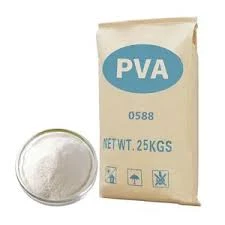The Versatile World of Cellulose Polymers
Cellulose, a natural polymer derived from the cell walls of plants, is one of the most abundant organic compounds on earth. As a primary component of plant cell walls, it plays a crucial role in providing structural support to plants. With the increasing demand for sustainable and biodegradable materials, cellulose and its derivatives have gained significant attention in various industries, including pharmaceuticals, food, textiles, and packaging. This article explores the intriguing properties, applications, and future potential of cellulose polymers.
What is Cellulose?
Cellulose is a linear chain of glucose units linked together by β-1,4-glycosidic bonds. This unique structure gives cellulose its rigidity and the ability to form strong fibers. Unlike starch, which is a storage polysaccharide, cellulose serves primarily as a structural component. Being insoluble in water, cellulose can be found in various forms depending on its origin and method of extraction. The most notable sources of cellulose include wood pulp, cotton, and certain agricultural residues, which can be converted into cellulose fibers and other derivatives.
Properties of Cellulose Polymers
The remarkable properties of cellulose polymers make them highly versatile materials. Some key characteristics include
1. Biodegradability Unlike synthetic polymers like plastics, cellulose is biodegradable, breaking down naturally in the environment and significantly reducing pollution.
2. Biocompatibility Due to its natural origin and non-toxic nature, cellulose is widely used in biomedical applications. It does not elicit adverse immune reactions and can be safely used in drug delivery systems.
3. Hydrophilicity Cellulose polymers have a high affinity for water, making them excellent for applications where moisture absorption is required, such as in food packaging and absorbent materials.
4. Strength and Flexibility Cellulose fibers exhibit remarkable tensile strength while retaining flexibility, making them ideal for use in textiles and composites.
Applications of Cellulose Polymers
Given their advantageous properties, cellulose polymers have found extensive applications across various fields
'cellulose polymer'

1. Pharmaceuticals Microcrystalline cellulose (MCC) is commonly used as an excipient in tablets and capsules, serving as a filler and binder. Its inert nature and biocompatibility make it suitable for medical applications, including the creation of controlled-release drug delivery systems.
2. Food Industry Cellulose derivatives like carboxymethyl cellulose (CMC) are widely used as thickeners, stabilizers, and emulsifying agents in food products. They improve texture and shelf-life, making them essential in the production of sauces, dressings, and dairy products.
3. Textiles Cellulose fibers, such as cotton and rayon, are integral to the textile industry. They are used in clothing, upholstery, and non-woven fabrics. Innovations in fiber processing techniques continue to enhance the strength and performance of cellulose-based textiles.
4. Packaging With increasing environmental concerns surrounding plastic waste, cellulose-based packaging materials have emerged as a sustainable alternative. They offer excellent barrier properties against moisture and oxygen, making them suitable for food packaging applications.
5. Construction Materials Cellulose fibers are also utilized in the production of bio-based building materials, such as insulation and composites, due to their strength and insulating properties.
The Future of Cellulose Polymers
The future of cellulose polymers looks promising as research continues to explore novel applications and processing methods. Technological advancements are facilitating the extraction of cellulose from a variety of sources, including agricultural waste, thereby promoting sustainability and circular economy practices.
Innovations in nanocellulose, a nanostructured form of cellulose, are opening new avenues in materials science. Nanocellulose exhibits exceptional mechanical properties and has potential applications in electronics, medicine, and renewable energy technologies.
Moreover, as consumers become increasingly aware of environmental issues, the demand for biodegradable and sustainable materials is set to rise. Cellulose polymers, with their eco-friendly nature and versatility, are well-positioned to meet this demand.
Conclusion
Cellulose polymers represent a fascinating intersection of nature and technology. Their abundant availability, biodegradability, and versatility make them ideal candidates for a wide range of applications. As industries shift towards sustainability, cellulose polymers will undoubtedly play a pivotal role in creating a greener and more sustainable future. With ongoing research and development, the potential of cellulose extends far beyond its traditional uses, paving the way for innovative solutions that benefit both our health and the environment.
-
A Comprehensive Guide to Methyl Ethyl Hydroxyethyl Cellulose: Applications and Industry InsightsNewsNov.24,2025
-
Understanding Methyl 2 Hydroxyethyl Cellulose: Uses, Benefits & Industry InsightsNewsNov.24,2025
-
Hydroxyethyl Methyl Cellulose HEMC: Industrial Uses, Benefits & Future TrendsNewsNov.23,2025
-
HEMC Cellulose: Versatile & Sustainable Industrial Polymer | YoungcelNewsNov.23,2025
-
Methyl Hydroxyethyl Cellulose: Versatile Building Block for Industry & SustainabilityNewsNov.23,2025
-
CAS 9032 42 2: Understanding Polyvinyl Alcohol's Impact on Industry & SustainabilityNewsNov.22,2025




